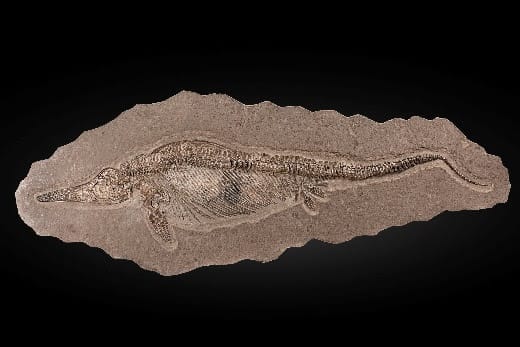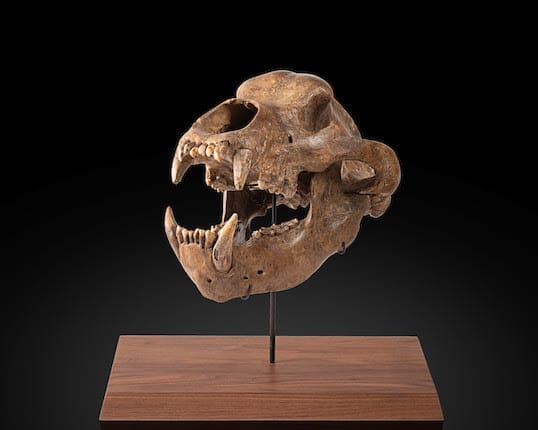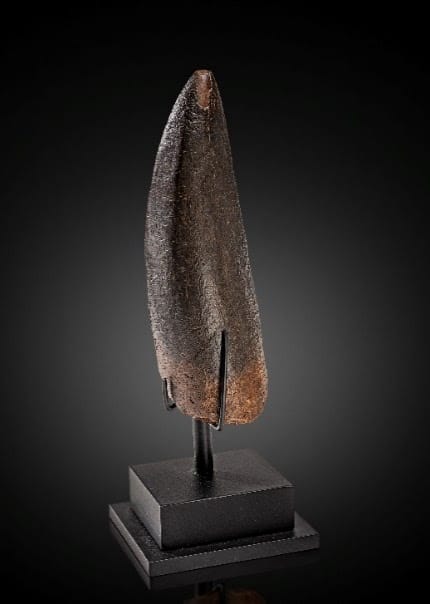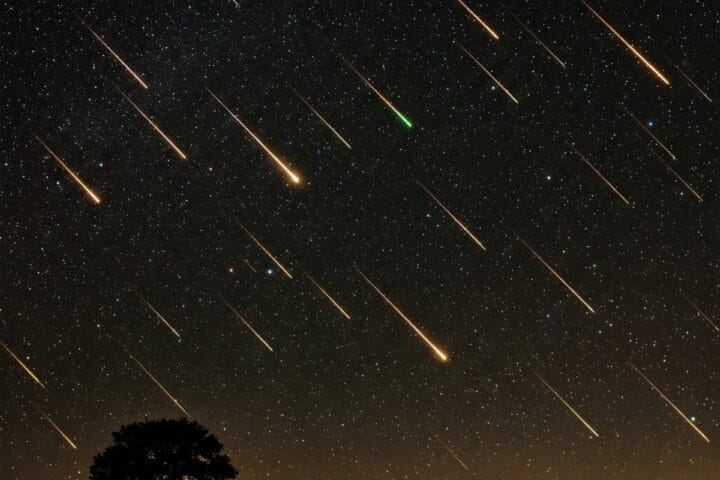Paris – The first sale of Naturalia organised by Bonhams Cornette de Saint Cyr, which took place in Paris on 21 September, achieved a total of €621,034. French and international collectors praised the exceptional pieces presented in this sale.
Fossils and skeletons have always fascinated collectors and are still highly sought after. A pair of woolly mammoth tusks measuring more than 2 meters long, found in Yakutia in north-eastern Siberia, won the highest bid at €50,775 (estimate: €45,000-65,000).
An exceptional Ichthyosaur skeleton (Ichthyosaur Leptopterygius quadriscissus) sold for €48,255 against an estimate of €40,000-50,000. A diapsid marine reptile that disappeared in the Late Cretaceous, this animal, whose fossil was found in the Posidonia clay of Holzmaden in Germany, is a fine example of the animals that inhabited the Jurassic seas. The present specimen is so well preserved that one can even see the remnants of its last meal behind the bar-like rows of slender ribs including fish, squids, and belemnites.

A skull of Ursus spelaeus ingressus, commonly known as the Cave Bear, a now-extinct species that lived in the Upper Pleistocene over much of Europe, from southern England to the Caucasus, was estimated at €5,000 to €7,000. It was sold for €24,225. This specimen, discovered in Austria and truly exceptional in its state of preservation and particularly in its dentition, won over the amateurs.

A Tyrannosaurus-rex tooth dated to the last period of the Cretaceous period, about 65 million years ago, most probably from the anterior jaw, is remarkable for its size. Bidders were able to see the rarity of this specimen, which is a full 10.9 cm long and was sold for €20,400 (estimate: €15,000-20,000).

An exceptional Trilobite Mass Mortality Plate fossil plate showing a group of trilobites, marine arthropods that disappeared 250 million years ago, sold for €22,950. Trilobites had their heyday in the Paleozoic era: they were abundant and widespread from the Cambrian to the Permian, a period of over 250 million years.
Finally, an important American meteorite from Canyon Diablo, a complete specimen weighing more than 42 kg, fetched €35,655 (estimate: €30,000-40,000). Viewed by many collectors as the quintessential American meteorite, Canyon Diablo (meaning Devil’s Canyon) is the famous meteorite which produced the gigantic crater located about forty miles east of Flagstaff, Arizona.
Claudia Florian, Co-Consulting Director of Bonhams Natural History Department in Los Angeles, declared: “Interest in fossils goes back centuries, with the first cabinets of curiosities being formed in Bologna, Italy, around 1600. This sale proves that the interest is still there, and that the rarity of certain pieces continues to fascinate collectors around the world. We will be back in Paris on 14 December with a Jurassic sea-themed auction of which the star is a remarkable three-dimensional 180-million-year-old Ichthyosaurus Stenopterygius longifrons found in France and estimated at €400,000 to €600,000.”












